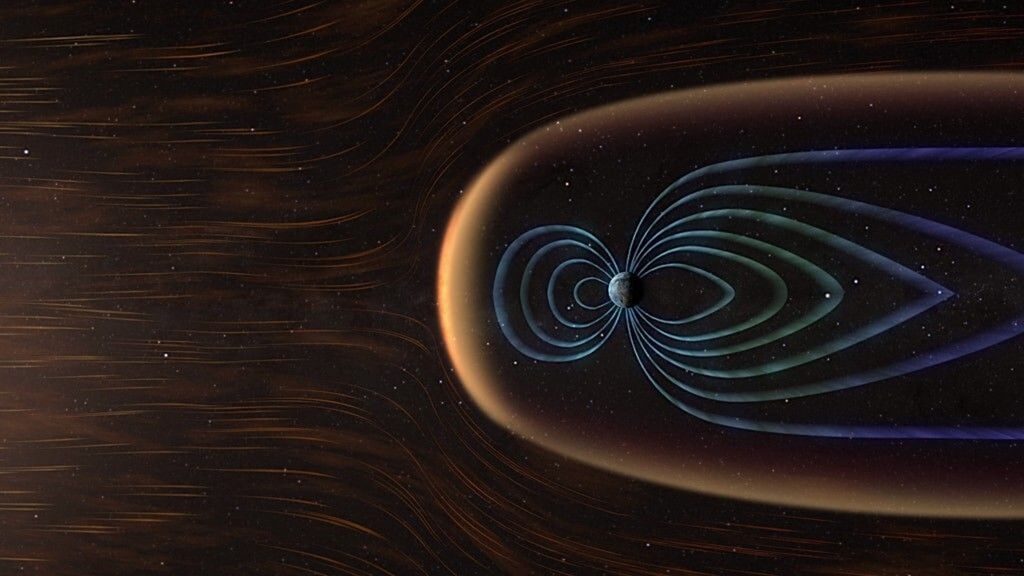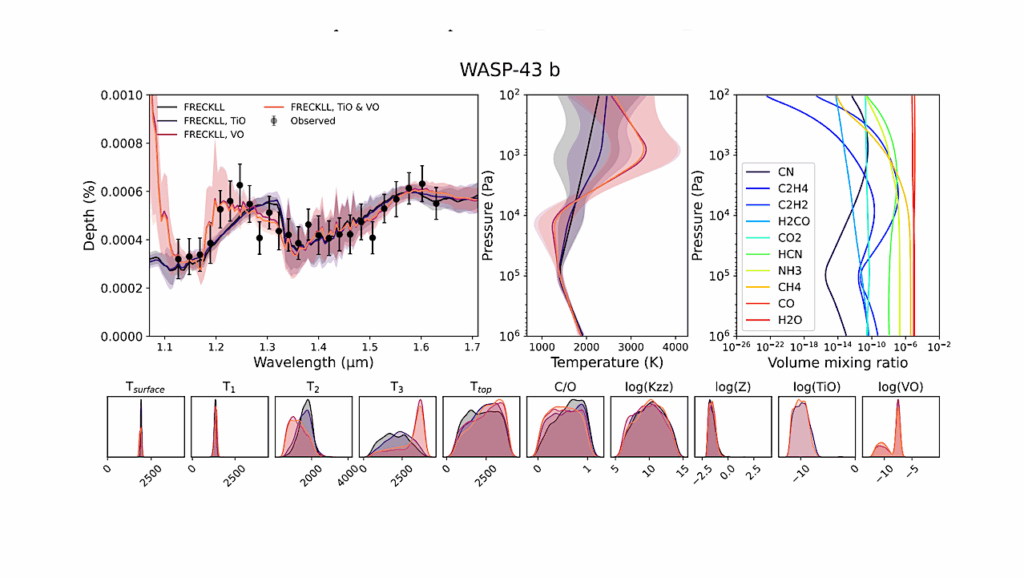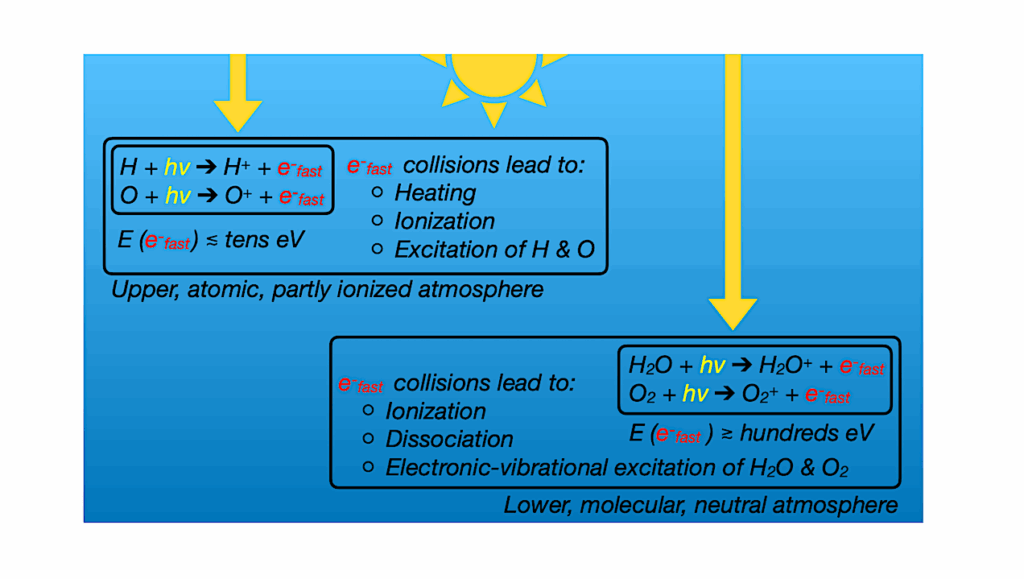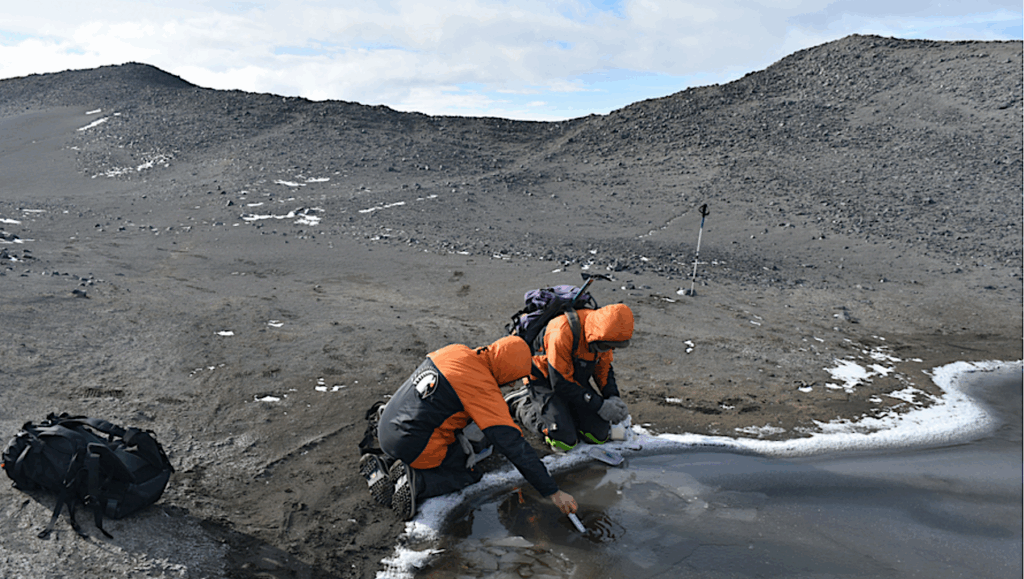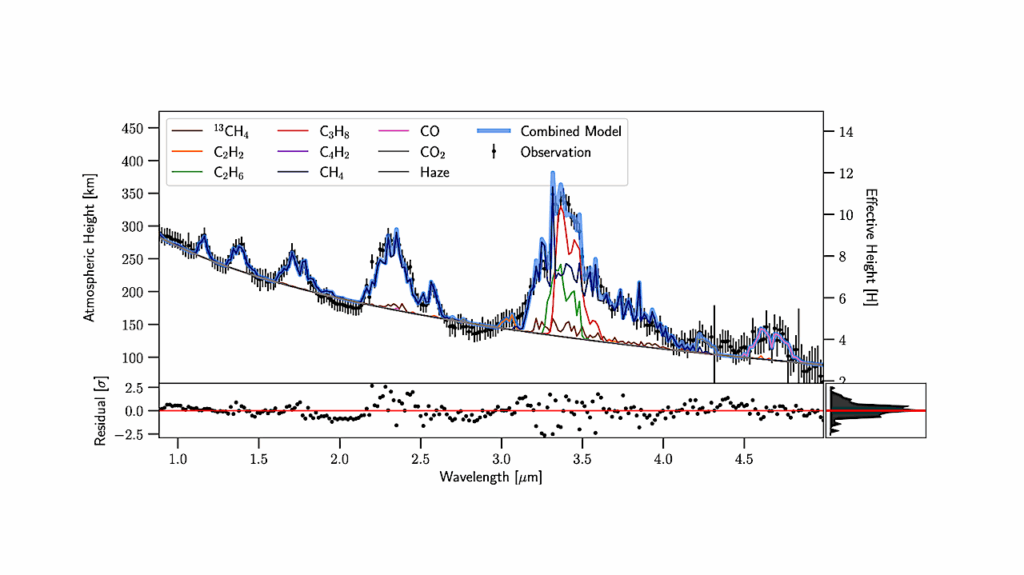Eta-Earth Revisited II: Deriving a Maximum Number of Earth-like Habitats in the Galactic Disk
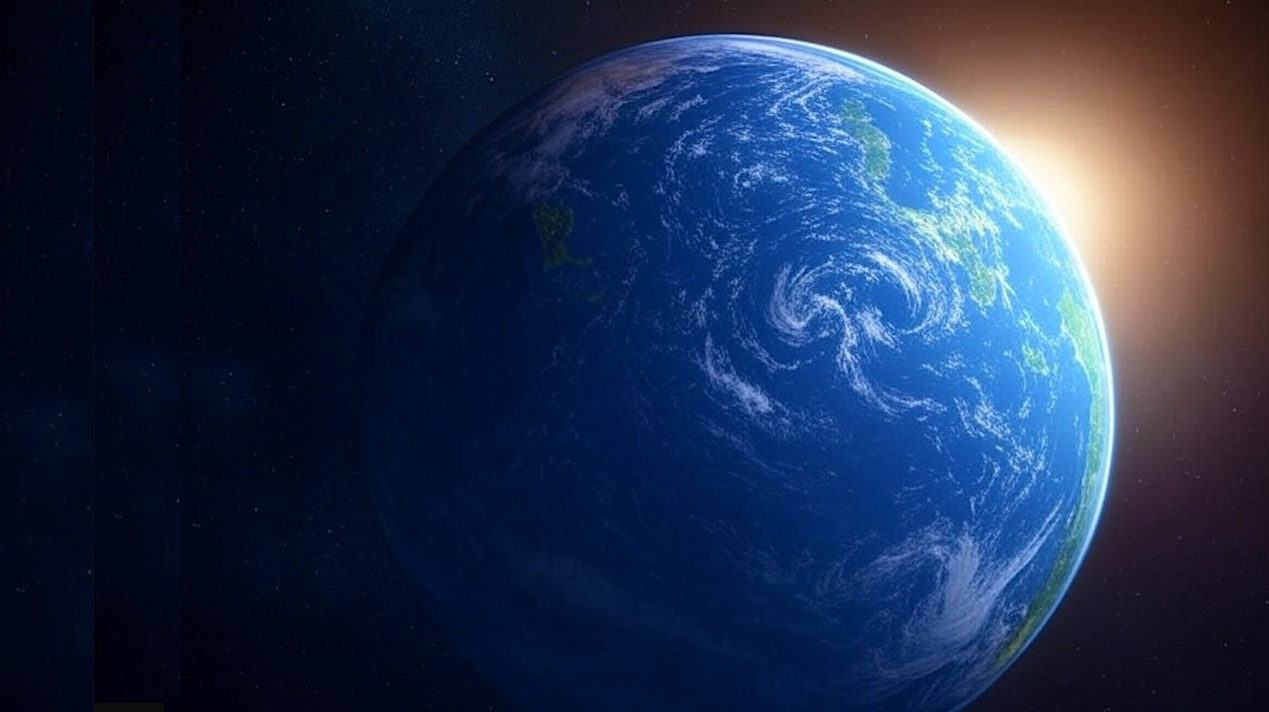
In Lammer et al. 2024, we defined Earth-like Habitats (EH) as rocky planets in the habitable zone of complex life (HZCL) on which Earth-like N2-O2-dominated atmospheres with minor amounts of CO2 can exist and derived a formula for estimating their maximum number in the Galaxy.
Here, we apply this formula by considering only requirements that are already scientifically quantifiable. By implementing models for star formation rate, initial mass function, and galactic mass distribution, we calculate the spatial distribution of disk stars as functions of stellar mass and birth age. We apply models for the GHZ and evaluate the thermal stability of Earth-like atmospheres with various CO2 mixing ratios by implementing the newest stellar evolution and upper atmosphere models.
In addition, we include the rocky exoplanet frequency, the availability of oceans and subaerial land, and the potential large moon requirement by evaluating their importance and implementing these criteria from minima to maxima values.
We also discuss factors that are not yet scientifically quantifiable but may be requirements for EHs to evolve. We find that EHs are rare by obtaining maximum numbers of 2.5+71.6−2.4×105 and 0.6+27.1−0.59×105 planets that can potentially host N2-Earth-like atmospheres with maximum CO2 mixing ratios of 10% and 1%, respectively, implying that a minimum of ∼103−106 rocky HZCL planets are needed for 1 EH to evolve. Their actual number, however, may be substantially lower as several requirements are not included in our model; this also implies ETIs are significantly rarer still.
Our results illustrate that neither every star can host EHs, nor that each rocky HZCL planet evolves such that it may be able to host complex animal-like life. The Copernican Principle therefore cannot be applied to infer that such life is common in the Galaxy.
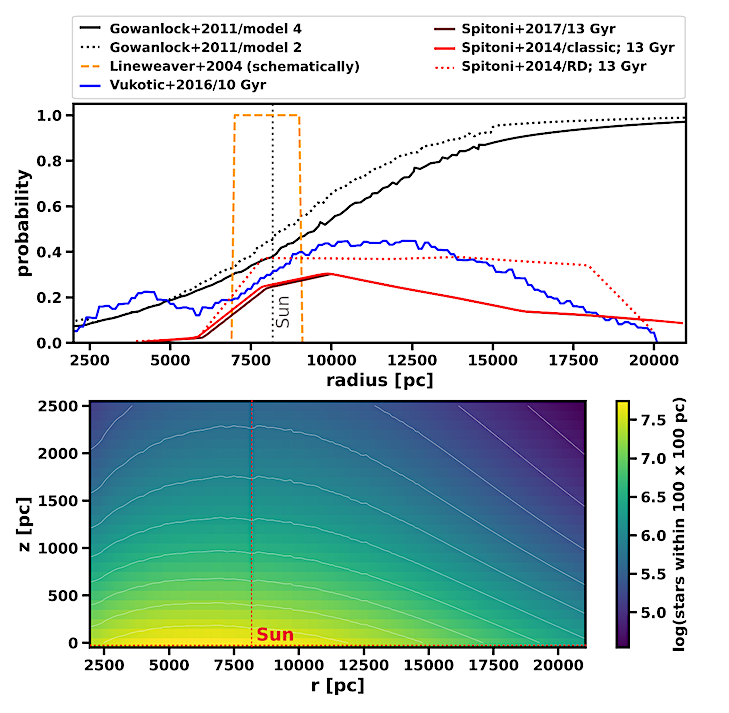
Galactic habitable zones (GHZ) from various studies, which show the probability of being habitable as a function of galactocentric distance. The black lines show the fraction of stellar systems that are not sterilized by SNs in two of the GHZ models (both of them extrapolated from 15000 pc up to 21000 pc) by Gowanlock et al. (2011). The dashed orange line schematically and in a simplified manner illustrates the annular region of 7000-9000 pc from the landmark study by Lineweaver et al. (2004) within which habitable planets are the most likely; note, however, that the GHZ in Lineweaver et al. (2004) is much more complex (see their Fig. 3) and that habitable planets are not restricted to this annulus. The blue line indicates results by Vukoti´c et al. (2016) for the 10 Gyr old Galaxy based on SN explosions, metallicity, and orbital stability. The red and dark-red lines show different models by Spitoni et al. (2014) and Spitoni et al. (2017) that include SN explosions and the chemical evolution of the Milky Way. Lower panel: Distribution of stars in the r-z plane of the galactic disk that were not sterilized by supernovae during the last 4 Gyr based on ‘model 4’ by Gowanlock et al. (2011), i.e., the model implemented in our nominal case. Data extracted from: upper panel of Fig. 6 by Gowanlock et al. (2011) for the solid black lines (model 2 and model 4); bottom right panel of Fig. 5 in Vukoti´c et al. (2016) for the blue line; Fig. 4 and right panel of Fig. 11 (dark red lines, both) by Spitoni et al. (2014) for the red solid and dotted lines, respectively; right panel of Fig 5 (yellow line) by Spitoni et al. (2017) for the dark red line; GHZ by Lineweaver et al. (2004) as stated within their article. — astro-ph.EP
Manuel Scherf, Helmut Lammer, Laurenz Sproß
Comments: accepted manuscript submitted to Astrobiology, 116 pages, 34 figures, 7 appendices including various reviews; link to published version: this https URL
Subjects: Earth and Planetary Astrophysics (astro-ph.EP); Astrophysics of Galaxies (astro-ph.GA); Solar and Stellar Astrophysics (astro-ph.SR)
Cite as: arXiv:2412.05002 [astro-ph.EP] (or arXiv:2412.05002v1 [astro-ph.EP] for this version)
https://doi.org/10.48550/arXiv.2412.05002
Focus to learn more
Journal reference: Astrobiology, 24, 10, e916 2024
Related DOI:
https://doi.org/10.1089/ast.2023.0076
Focus to learn more
Submission history
From: Manuel Scherf
[v1] Fri, 6 Dec 2024 12:58:14 UTC (24,144 KB)
https://arxiv.org/abs/2412.05002
Astrobiology


